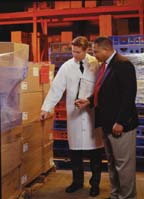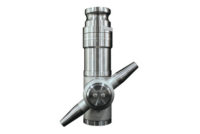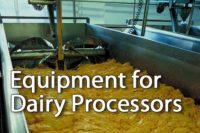
You may be thinking, ‘What does pest control have to do with helping the environment? Doesn't my pest control service rely on all kinds of chemicals?' Maybe, but it doesn't have to. In fact, a smart, proactive program can achieve the control your sensitive facility needs with far less pesticide than you might imagine. And, new technologies can reduce the need for pesticides even further. The result? A cleaner, safer facility and ideally, better inspection grades.
So how can you be clean and green?
Without question, the first step is to set up an Integrated Pest Management (IPM) program. True IPM calls for pesticides only when non-chemical methods fail, and then only in careful applications designed to control a specific pest problem.
IPM programs start with an inspection of the entire facility to identify potential entry points for pests. It sounds simple, but it's one of the best ways to keep pests out without chemicals use. Once they get inside, forcing them out is much more challenging and may require chemical applications. Some environmentally friendly strategies you might implement to keep pests outside are:
- Sealing cracks and crevices so that rodents or other pests cannot enter.
- Removing any vegetation that might attract pests from exterior walls.
- Using lights - mount outdoor fluorescent lights at least 100 feet from the building to draw flying insects away from entrances, and install sodium vapor lights, which are less attractive to insects, at entrances and exits.
Advances in technology have also opened doors to even more environmentally sound pest management tools, from hand-held pest-monitoring devices to microbes that devour the grease and grime in which some insects reproduce.
One such "green" tool is OE-30. Based on biotechnology similar to that used to clean up hazardous oil spills from trains or ocean tankers, OE-30 employs naturally occurring enzymes and bacteria to remove grease and grime buildup from floors and drains without hazardous chemicals. OE-30 is applied easily with a mop. The harmless bacteria are activated when mixed with water, and eagerly consume grease molecules and other organic debris. By removing organic material from floors and drains, OE-30 deprives pests of food sources and eliminates potential breeding grounds for fruit and drain flies.
Pest-monitoring technology can reduce pesticide usage as well. Hand-held IT applications, still relatively new to the pest management industry, allow on-site technicians to record data on pest activity and automatically submit it to a database. By identifying "hot spots" earlier, the technician can treat more precisely and with more environmentally friendly tools like non-volatile baits, insect growth regulators (IGRs) and pheromone traps.
Baits, IGRs and pheromone traps are considered safer because they are harmless to anything but the pests. Unlike pesticide sprays, non-volatile baits don't vaporize when exposed to air, reducing the opportunity for exposure to airborne pesticide. IGRs work by hormonally stunting the growth of the target insect, preventing it from reaching maturity. Pheremone traps lure insects with the promise of a potential mate.
As the pest management industry evolves, it will continue to move toward more environmentally sensitive tools and techniques. By setting up a customized IPM program and augmenting it with the latest technological advances in non-chemical pest management, you can keep your facility safe from pests and reduce your dependence on potentially harmful pesticides.




